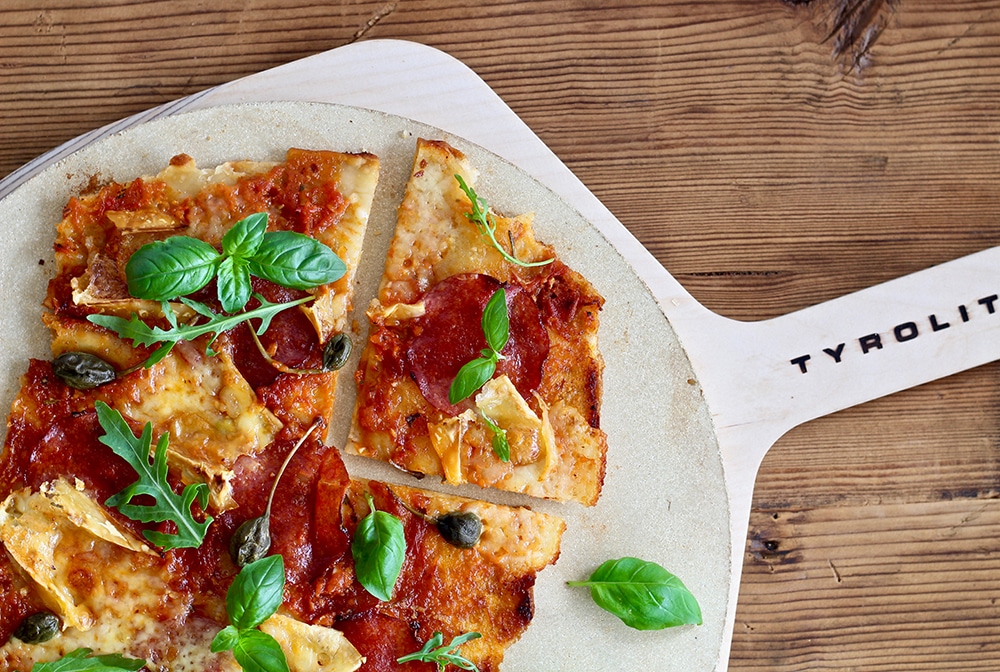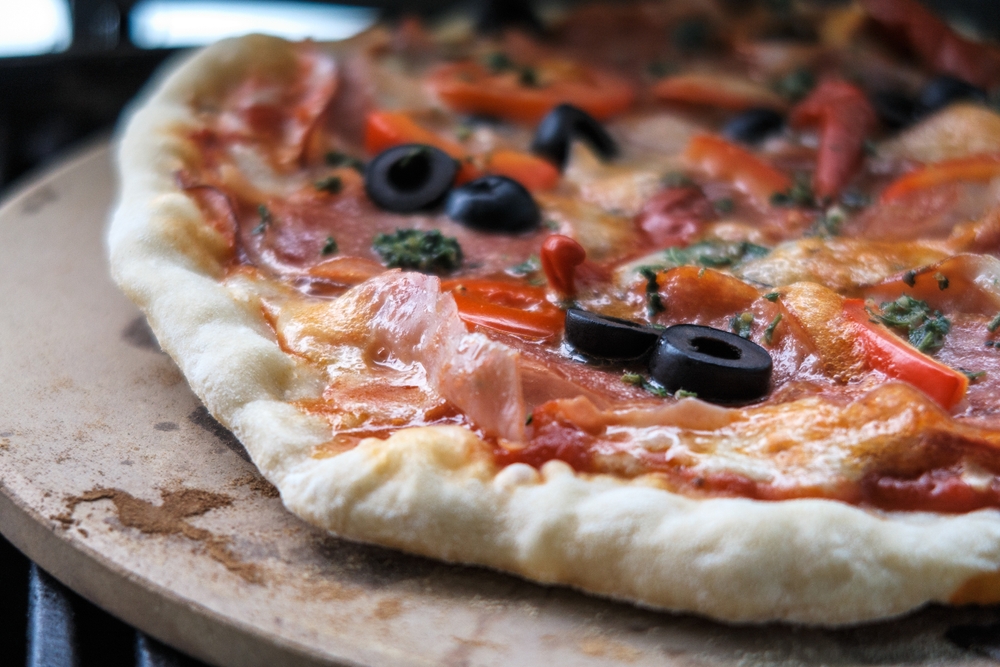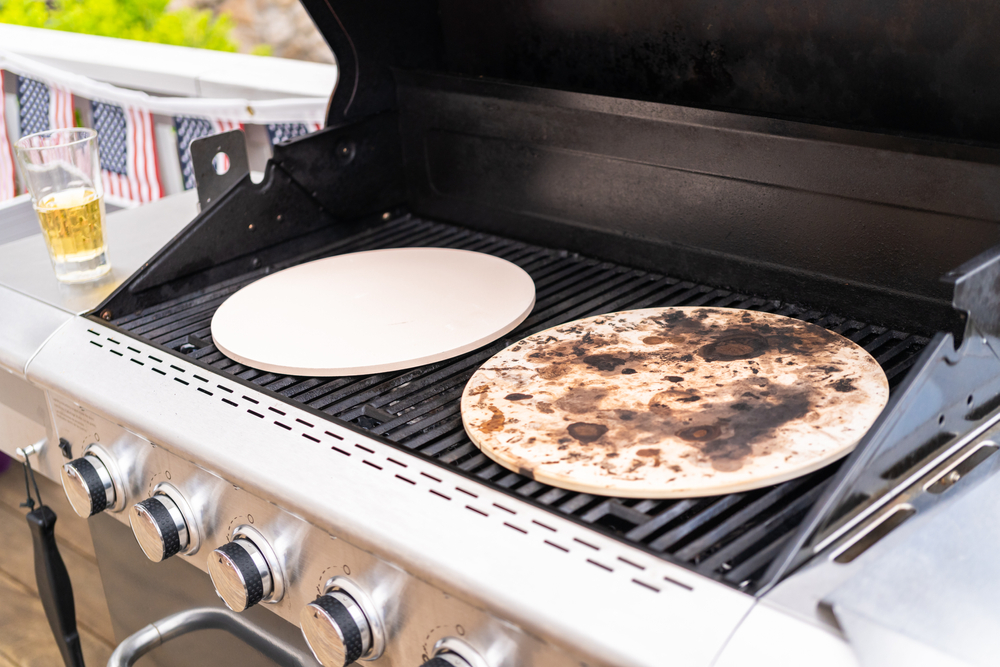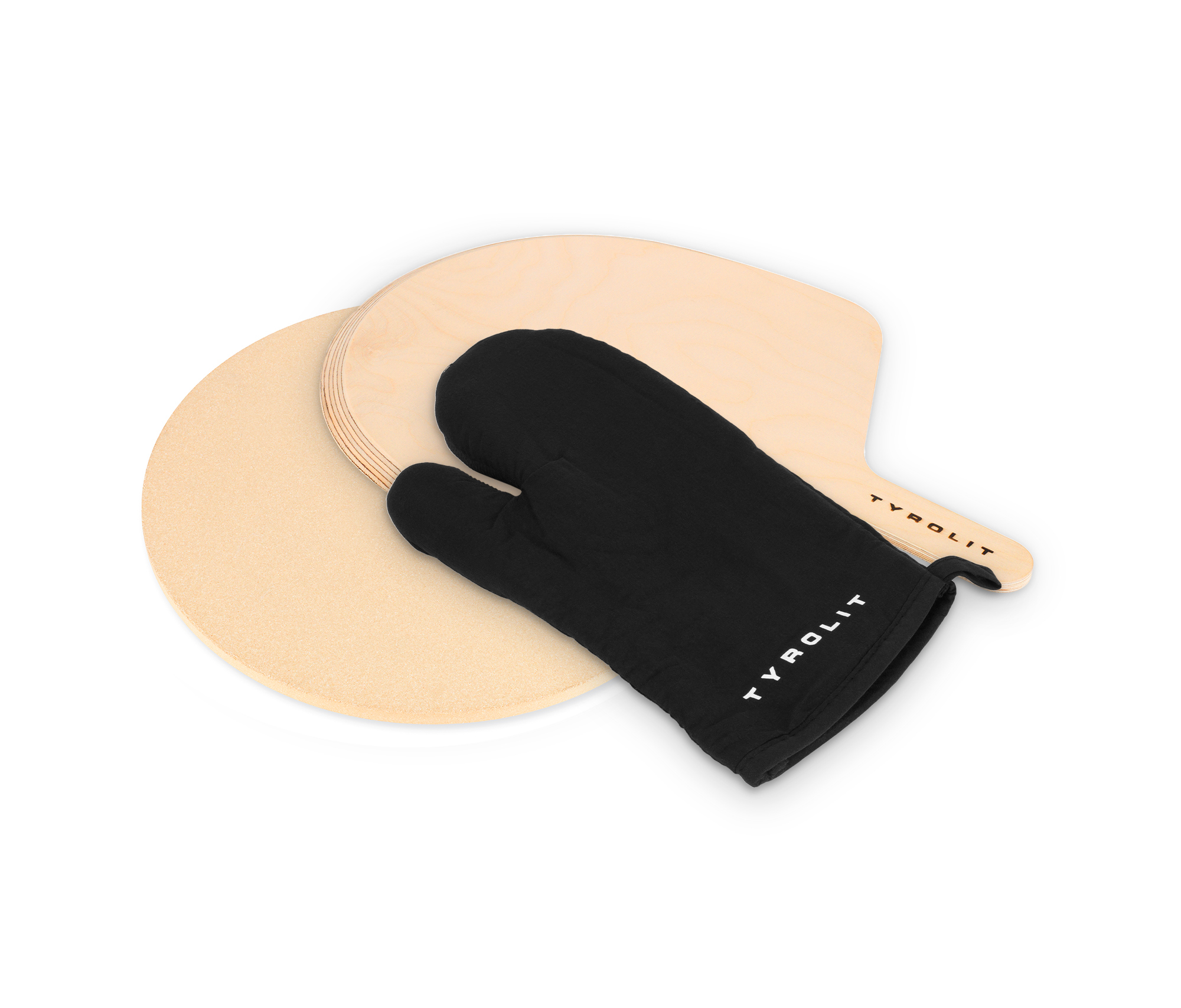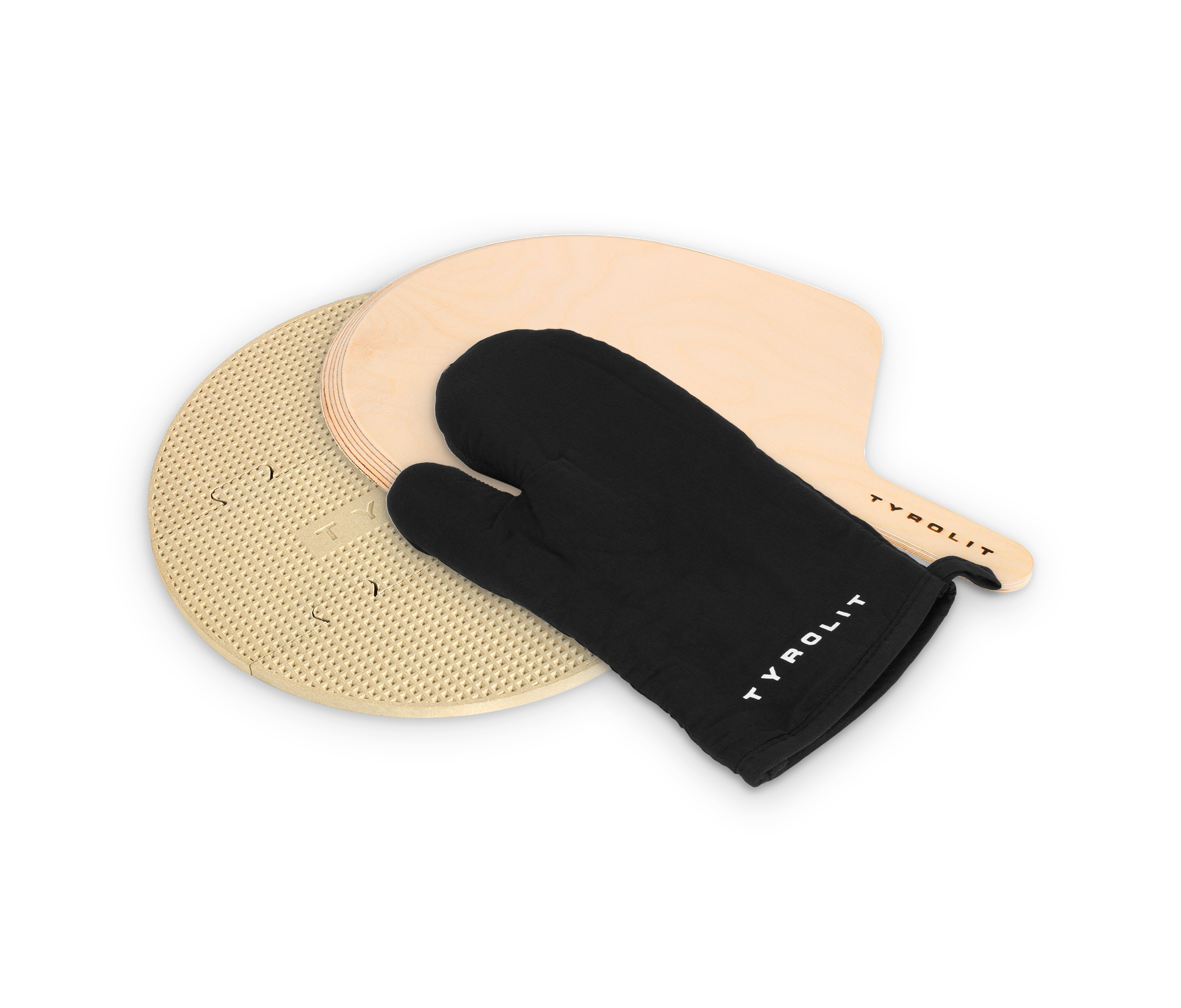How do I use a pizza stone correctly?
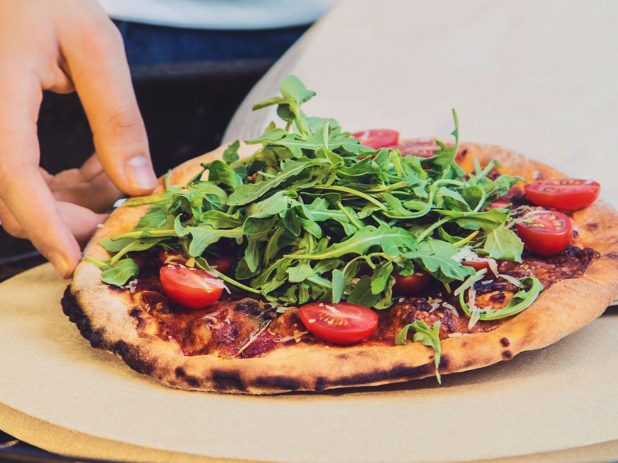
Pizza like in the pizzeria – with a pizza stone, this dream is within reach. After you have acquired a corresponding model (whether fireclay or cordierite), however, the question arises as to the correct use.
Tyrolit Life has a long tradition in the production of abrasives, but also produces cordierite pizza stones and other ceramic products for use in the kitchen.
Speaking of use: How do you use a pizza stone correctly? In summary:
- Heat up the pizza stone
- Prepare pizza
- Place the pizza on the pizza stone
- Bake for about 5 to 10 minutes
- Take pizza out of the oven, add the finishing touches and serve
- Allow the pizza stone to cool and clean it – avoid immersing in water
1. Heat up the pizza stone: grill or oven?
Before you can bake on your pizza stone, you first have to bring it to temperature. The heating time and temperature depend on the type of stone and the device used.
You can use the pizza stone in the oven, as well as on the grill. In the oven, the stone is typically placed in the lower third. On the grill, the stone is heated directly above the heat source with the lid closed (it is placed there before the grill is heated up). Both methods generate intense heat, which is crucial for perfectly baking a pizza.
A pizza stone should be preheated for 30 to 45 minutes at around 230°C (446°F) in the oven or about 300°C (572°F) on the grill to reach the optimal baking temperature. Place the pizza stone in a cold oven or on a cold grill from the outset to prevent sudden temperature changes, and start the preheating process. During this time, the stone will absorb the heat, which it will then transfer to the pizza during baking.
Tyrolit Life offers its cordierite pizza stone with a waffle structure at the bottom to make heating up particularly efficient – 30 minutes are enough during which you can devote yourself to the next step: preparing the pizza.
2. The preparation of the pizza – let your creativity run wild!
While the pizza stone heats up, this is the perfect opportunity to prepare the pizza and let your creativity run wild. You can top the pizza with a variety of ingredients, from classic Italian toppings like tomatoes, mozzarella, and basil to creative variations like BBQ chicken, pineapple, or vegan options.
By the way, you can also use the pizza stone for preparing other dishes, like crispy bread, tarte flambée, doner, or even desserts such as fruit tarts or sweet casseroles. The stone’s high baking temperature and uniform heat distribution offer perfect cooking for a wide array of dishes, opening up numerous culinary possibilities.
3. Put pizza on the pizza stone
There are various methods for transferring the prepared pizza onto the pizza stone. A popular method involves using a pizza peel or paddle. These tools enable you to carefully slide the pizza onto the hot stone without it collapsing or losing its shape.
A pizza peel is especially useful because it provides greater control over the process and minimizes the risk of burns. Therefore, it often comes standard with many pizza stones – including the ones from Tyrolit Life. Ensure the pizza is well-positioned on the peel before transferring it to the hot stone. Using a generous amount of coarse flour underneath the dough will assist in this process.
Alternatively, you can prepare the pizza on a cutting board dusted with parchment paper or cornmeal and then quickly slide it onto the hot pizza stone – however, the parchment paper should not be left in the oven or grill. Be careful not to burn yourself.
Pizza Stone – All Facts on Materials, Application, and Maintenance
The pizza stone has become a must-have in countless kitchens. In this post, we’ll take a look at interesting facts about this kitchen helper – one thing in advance: the pizza stone is far more versatile than you might think.
4. Crisply bake and remove from the oven
The baking time of a pizza on a preheated pizza stone is usually between 5 and 10 minutes, depending on the thickness of the dough and the toppings. During the baking process, you should keep an eye on the pizza to ensure that it browns evenly and does not burn.
To remove the fully baked pizza from the pizza stone, you can use a pizza peel or a pizza spatula, sliding it gently under the pizza’s edge, and then transfer it onto a sturdy surface.
Be careful as the stone and pizza are very hot.
5. Mealtime – Enjoy your homemade pizza
After the pizza has been taken out of the oven, it’s time to enjoy it. You can slice the pizza with a pizza cutter or a knife, according to your preferences.
Before serving the pizza, you can top it off with fresh ingredients. Depending on your preference, you can enhance your pizza with fresh arugula, a ball of burrata, or a drizzle of olive oil, completing the culinary delight.
The pizza is often enjoyed with hands. For those who prefer using a knife and fork, steak knives or other serrated blades are recommended. These make it particularly easy to slice through the crispy crust and enjoy the pizza in sizable pieces
Cleaning Your Pizza Stone – 7 Tips for Keeping It Clean
How do you clean a pizza stone? Fortunately, it’s not at all difficult to get the pizza stone clean again. The principle is: less is more! To ensure the few steps needed for cleaning the pizza stone are effectively applied, we have put together 7 useful tips for you here.
6. Allow the stone to cool slowly, then clean it
After enjoying your homemade pizza, it is important to allow the pizza stone to cool slowly to avoid damage. Switch off the oven or grill and allow the stone to cool completely before touching it and cleaning according to the manufacturer’s instructions.
To clean the pizza stone, simply remove flour and similar residues with a spatula, brush, or rag. Avoid cleaning the stone with water or soap – it could break. A pizza stone should never be placed in the dishwasher.
Coarser, raised residues (e.g. burnt-in coating) may also be carefully removed with the ceramic field scraper, but pay attention to the manufacturer’s instructions. Stains and discoloration on the pizza stone, on the other hand, are normal and are caused by use. These stains are harmless and contribute to the formation of a natural patina.
After cleaning the cold pizza stone, you can store it safely and without bumps. So it is ideally prepared to deliver delicious baking results again next time.
Cordierite pizza stone – All details about the material
In this article, we delve into the world of pizza baking, with an emphasis on the traditional pizza stone that forms the basis for crispy, delicious pizzas. You will also learn about the benefits of cordierite.
FAQs
How does the pizza not stick to the pizza stone?
How do I use the pizza stone in the oven?
Should you oil a pizza stone?

